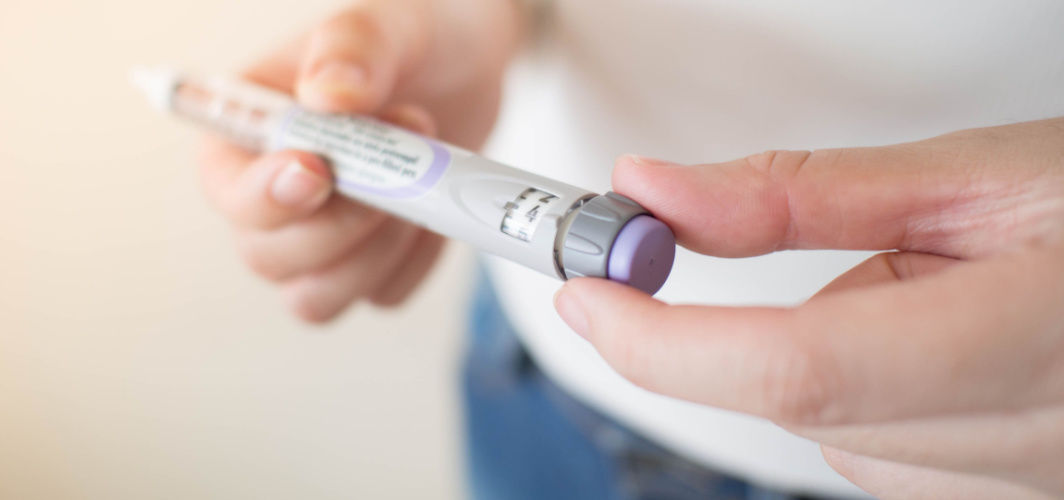Diabetes Management
Diabetes and Skin problems: Keep Them at Bay
5 min read
By Apollo 24/7, Published on - 04 December 2020, Updated on - 13 September 2023
Share this article
0
1 like

What skin problems can be experienced by people with diabetes?
- Darkening of skin: Medically called acanthosis nigricans, darkening and thickening of the skin of the neck, armpits, and groin area is a problem commonly seen in diabetics. The skin may also appear raised and dark tan in colour.
- Painless patches on the skin: Diabetes can affect the blood supply to the skin resulting in skin condition such as diabetic dermopathy, which appears as painless scaly light brown-red coloured patches usually seen on the front of the legs.
- Stiffening of digits: People with diabetes may experience thickening of the skin on their digits, that is the toes, fingers, and hands, which is medically called digital sclerosis. This condition can make the fingers stiff, thick, waxy and difficult to move. It can also be seen on the forearms, upper arms, upper back, shoulders, and neck.
- Stiffening of neck and back: This condition looks similar to digital sclerosis as the person experiences thickening of the skin. However, the thickening is seen mostly on the back of the neck and upper back and is mostly seen in overweight people with diabetes.
- Red-brown bumps on the skin: This condition is medically called Necrobiosis Lipoidica Diabeticorum, which occurs due to changes in the blood vessels and appears as reddish-brown coloured bumps that turn patchy. The patches can be shiny (wax-like shine) painful and itchy.
- Rashes: People with diabetes may witness ring or arc-shaped rashes on the fingers, hands, and feet, which is medically called disseminated granuloma annulare. These rashes may appear red, red-brown, or skin-coloured.
- Firm yellow bumps on the skin: People with high blood glucose and triglycerides (type of cholesterol) levels may experience firm, yellow, pea-sized bumps on the skin which can be itchy and surrounded by red halos. This is medically called eruptive xanthomatosis and is usually seen on the feet, arms, legs, buttocks, and the backs of the hands.
- Dry and itchy skin: Dry and itchy skin (pruritus) in diabetics can be a sign of a yeast infection or poor blood flow. Mostly, the itching is experienced in the lower legs and feet but can be experienced on any other parts of the body as well.
- Blisters: Diabetic blisters can resemble burn blisters and are usually seen on the fingers, hands, feet, legs and forearms. These blisters are usually painless, large in size and heal on their own without leaving a scar. These blisters can be a sign of diabetic neuropathy (nerve pain).
Because of any reason, if you or your family member have any of the above mentioned skin conditions, consult our best dermatologists.
How can people with diabetes take better care of their skin?
- Follow the diet, exercise regime and medications as per the advice of the healthcare provider.
- Drink plenty of water as it would help in keeping the skin moist and hydrated.
- Use a mild, moisture-containing soap for bathing and pat dry the body properly as wet skin can act as a site of infection. Do not use products that contain fragrance or dye.
- Thoroughly clean places like underarms, under the breasts, between the legs and between the toes as water can get collected easily in these areas.
- Avoid bubble baths and extremely hot water as it can dry out the skin.
- Apply moisturizer on the entire body after bathing to lock the moisture in. Avoid chapped lips by moisturizing with a lip balm.
- Use a humidifier to add moisture to the room, thus preventing drying of the skin.
- Use a sunscreen with an SPF of or higher than 30 to protect the skin from harmful UV rays.
- Try wearing cotton undergarments as they allow the skin to breathe through it.
- Treat all the wounds and cuts right away using antibacterial ointments, gauze pads, hypoallergenic tape and cleansing wipes. Avoid using iodine and alcohol to clean the cuts as they can be too harsh.
Even after following all these precautionary measures and home remedies, if you have skin problems and abnormal blood glucose levels, consult with our highly experienced diabetologists and dermatologists.
When to seek medical help?
- A rash or infection after taking medication or near the site of insulin injection
- A blister, cut or burn that persists for long
- Persistent dry skin
- Pain and discomfort which lasts for more than 2 days
- Persistent fever
- Formation of pus around a wound or a sore
Takeaway
Diabetes Management
Leave Comment
Recommended for you

Diabetes Management
Glycemic Index for Diabetes Management: Why it is Useful
The glycemic index (GI) ranks foods based on their impact on blood sugar levels. It helps individuals with diabetes make informed food choices, focusing on foods with a lower glycemic index to maintain stable blood sugar levels and overall better glycemic control.

Diabetes Management
8 Important Tests for People with Type 2 Diabetes
Regular monitoring of various health parameters is extremely crucial for individuals with diabetes to prevent health complications. These include the HbA1c test to assess blood glucose management, blood pressure checks to monitor cardiovascular health, lipid profile tests to evaluate cholesterol levels, electrocardiograms to detect heart issues, eye examinations to prevent diabetic eye complications. Regular check-ups can help diabetics to effectively manage their overall health.

Diabetes Management
What Is Insulin? Answering The Top 5 Frequently Asked Questions
The different types of insulin available for diabetes management are rapid-acting insulin which works quickly and short-acting insulin which is taken before meals to control blood sugar levels. Intermediate-acting insulin has a prolonged effect and is taken twice a day for basal insulin coverage during fasting periods while long-acting insulin provides a steady release of basal insulin for 24 hours to maintain stable blood sugar levels, and pre-mixed insulin that combines short-acting and intermediate-acting insulin.
Subscribe
Sign up for our free Health Library Daily Newsletter
Get doctor-approved health tips, news, and more.
Visual Stories

8 Fruits That are Incredibly Healthy for Diabetes
Tap to continue exploring
Recommended for you

Diabetes Management
Glycemic Index for Diabetes Management: Why it is Useful
The glycemic index (GI) ranks foods based on their impact on blood sugar levels. It helps individuals with diabetes make informed food choices, focusing on foods with a lower glycemic index to maintain stable blood sugar levels and overall better glycemic control.

Diabetes Management
8 Important Tests for People with Type 2 Diabetes
Regular monitoring of various health parameters is extremely crucial for individuals with diabetes to prevent health complications. These include the HbA1c test to assess blood glucose management, blood pressure checks to monitor cardiovascular health, lipid profile tests to evaluate cholesterol levels, electrocardiograms to detect heart issues, eye examinations to prevent diabetic eye complications. Regular check-ups can help diabetics to effectively manage their overall health.

Diabetes Management
What Is Insulin? Answering The Top 5 Frequently Asked Questions
The different types of insulin available for diabetes management are rapid-acting insulin which works quickly and short-acting insulin which is taken before meals to control blood sugar levels. Intermediate-acting insulin has a prolonged effect and is taken twice a day for basal insulin coverage during fasting periods while long-acting insulin provides a steady release of basal insulin for 24 hours to maintain stable blood sugar levels, and pre-mixed insulin that combines short-acting and intermediate-acting insulin.